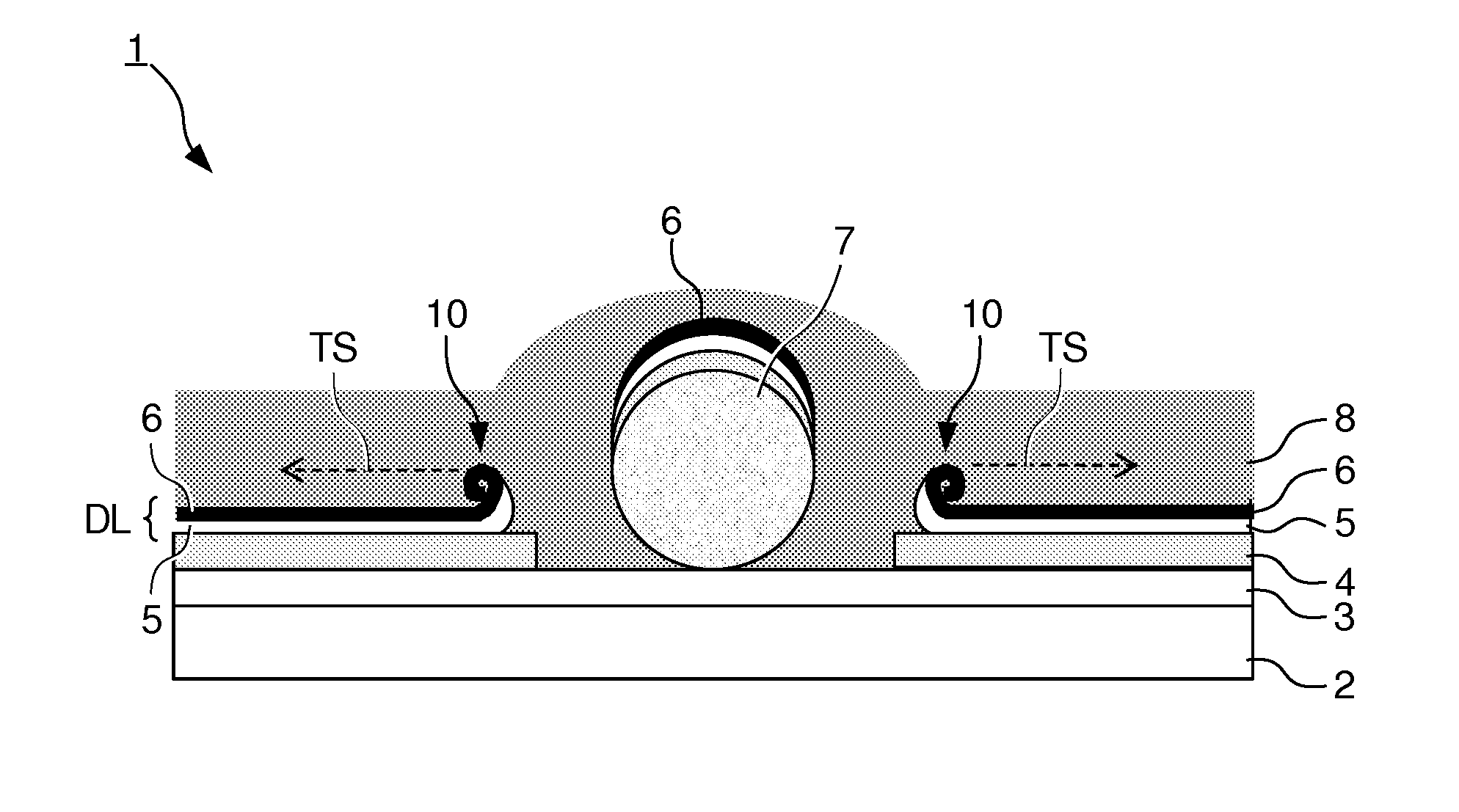Organic electroluminescent devices
a technology of electroluminescent devices and organic materials, which is applied in the direction of organic semiconductor devices, solid-state devices, thermoelectric devices, etc., can solve the problems of failure of oled devices, unavoidable particle presence, dust for example, during the production process, etc., to prevent any damage to the electroluminescent layer stack, easy reproducible stress conditions, and reduce process costs
- Summary
- Abstract
- Description
- Claims
- Application Information
AI Technical Summary
Benefits of technology
Problems solved by technology
Method used
Image
Examples
Embodiment Construction
[0035]FIG. 1 is a schematic cross-sectional view of an OLED device 1 according to the present invention comprising a flat glass substrate 2 onto which a transparent ITO anode of a layer thickness of 120 nm as the substrate electrode 3 has been deposited by sputtering or CVD. On top of the substrate electrode 3 an organic electroluminescent layer stack 4 to emit light is deposited comprising a 25 nm thick hole injection layer of NHT-5 α-NPD doped with 4% F4-TCNQ, a 10 nm thick hole transport layer of α-NPD, a 30 nm thick organic light emitting layer of a matrix material with embedded light emitting small molecules, and a 50 nm thick electron transporting layer of TPBI. People skilled in the art may chose alternative electroluminescent layer stack with additional layers or with a lower number of layer or even with a single organic light emitting layer within the present invention. A counter electrode 5 made of aluminum with a thickness of 100 nm is evaporated on top of the organic ele...
PUM
 Login to View More
Login to View More Abstract
Description
Claims
Application Information
 Login to View More
Login to View More - R&D
- Intellectual Property
- Life Sciences
- Materials
- Tech Scout
- Unparalleled Data Quality
- Higher Quality Content
- 60% Fewer Hallucinations
Browse by: Latest US Patents, China's latest patents, Technical Efficacy Thesaurus, Application Domain, Technology Topic, Popular Technical Reports.
© 2025 PatSnap. All rights reserved.Legal|Privacy policy|Modern Slavery Act Transparency Statement|Sitemap|About US| Contact US: help@patsnap.com


